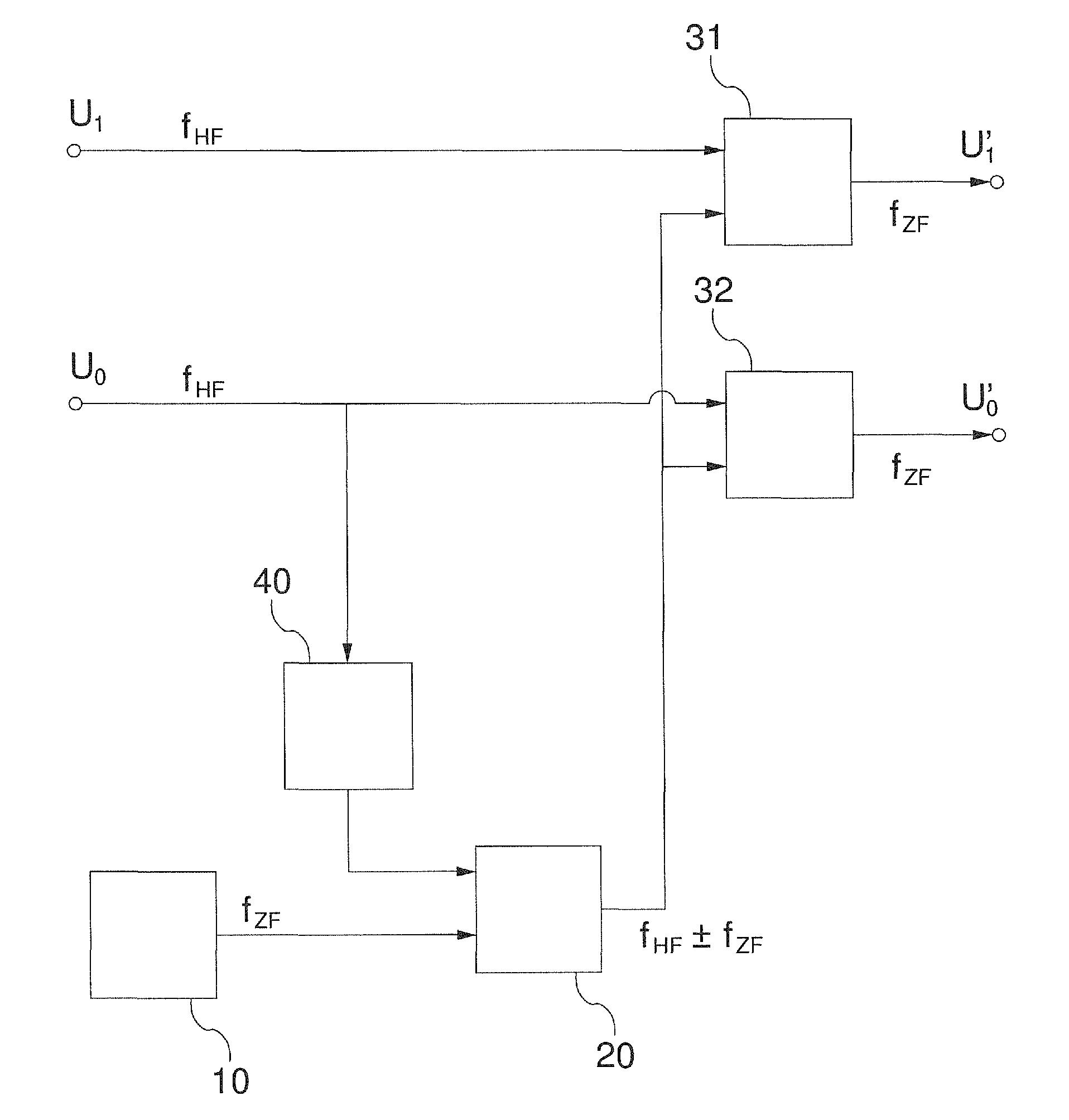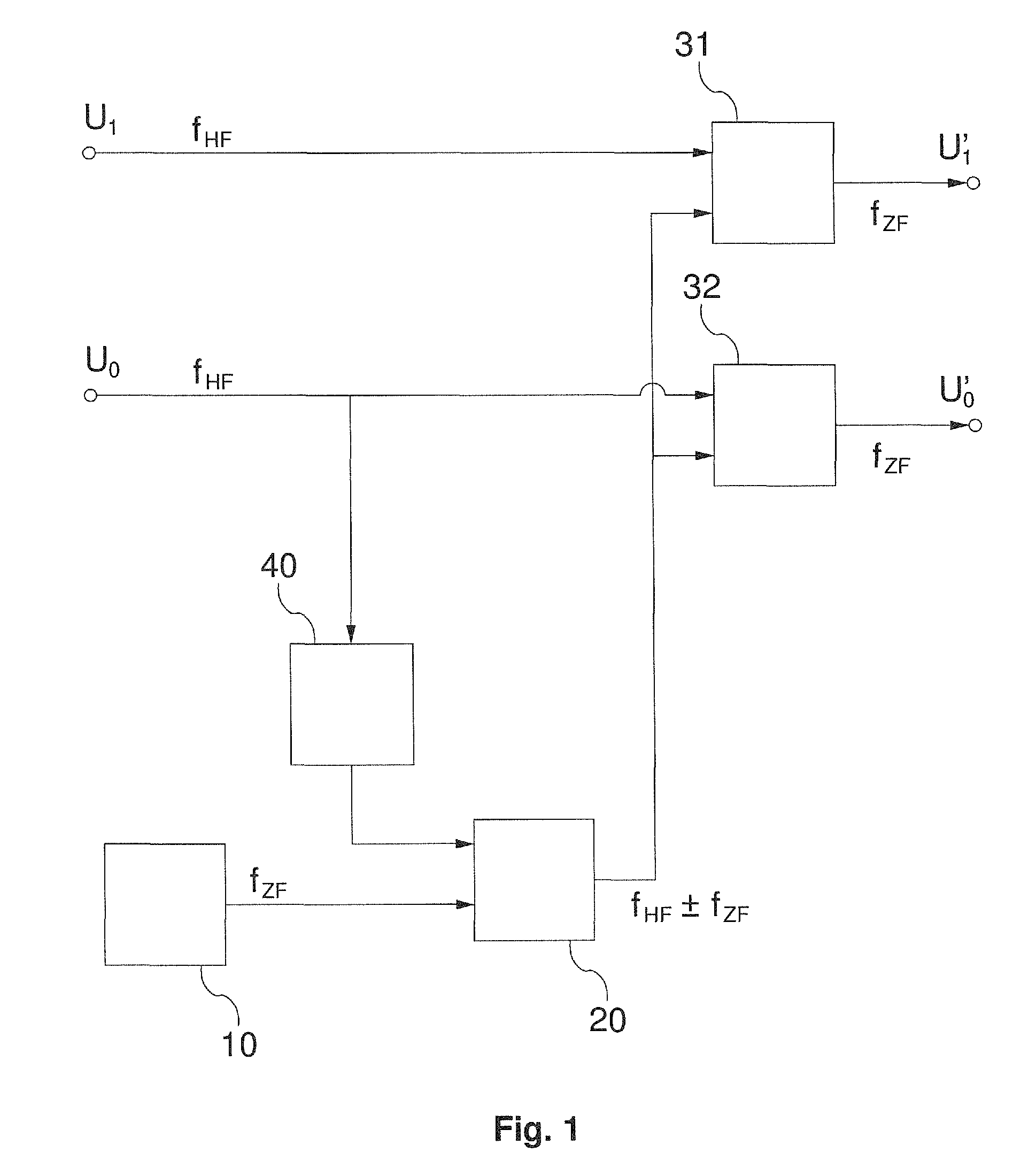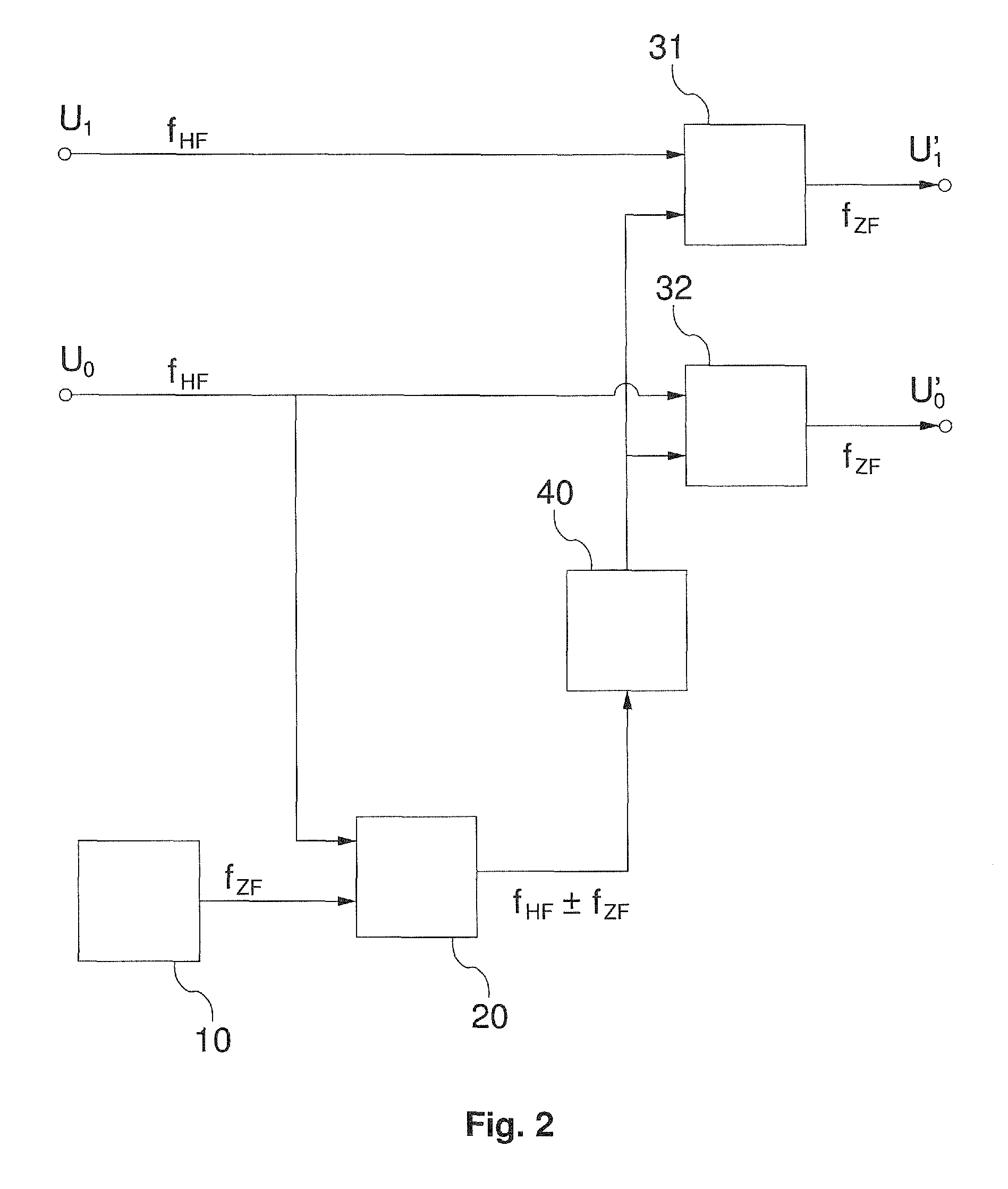Auto-heterodyne receiver
a receiver and auto-heterodyne technology, applied in the field of receiver circuits, can solve the problems of insufficient precise direct phase measurement by means of monodyne receivers, difficult in principle precise measurement of phase shifts, and limited stability of such conversions, so as to reduce circuitry demands
- Summary
- Abstract
- Description
- Claims
- Application Information
AI Technical Summary
Benefits of technology
Problems solved by technology
Method used
Image
Examples
Embodiment Construction
[0022]In the following, the invention will be explained in greater detail on the basis of two figures of exemplary embodiments.
[0023]FIG. 1 shows a first exemplary embodiment of an inventive receiver circuit in the form of a block diagram. Input signals U0 and U1 having a frequency fHF are present at two signal inputs of the receiver circuit. The two input signals may be two voltage signals, wherein one of the voltage signals is derived from a current that is operatively connected to the other voltage signal. An active-power / reactive-power ratio can then be determined by measuring the phase angle between the two input signals.
[0024]Any of the two input signals is transferred to an input of a quadrature modulator 20, wherein the selected input signal is advantageously led through an amplitude normalization unit 40 designed to amplify / damp the selected input signal up / down to a predetermined amplitude. An oscillation signal generated by a local oscillator 10 is transferred to the seco...
PUM
 Login to View More
Login to View More Abstract
Description
Claims
Application Information
 Login to View More
Login to View More - R&D
- Intellectual Property
- Life Sciences
- Materials
- Tech Scout
- Unparalleled Data Quality
- Higher Quality Content
- 60% Fewer Hallucinations
Browse by: Latest US Patents, China's latest patents, Technical Efficacy Thesaurus, Application Domain, Technology Topic, Popular Technical Reports.
© 2025 PatSnap. All rights reserved.Legal|Privacy policy|Modern Slavery Act Transparency Statement|Sitemap|About US| Contact US: help@patsnap.com



